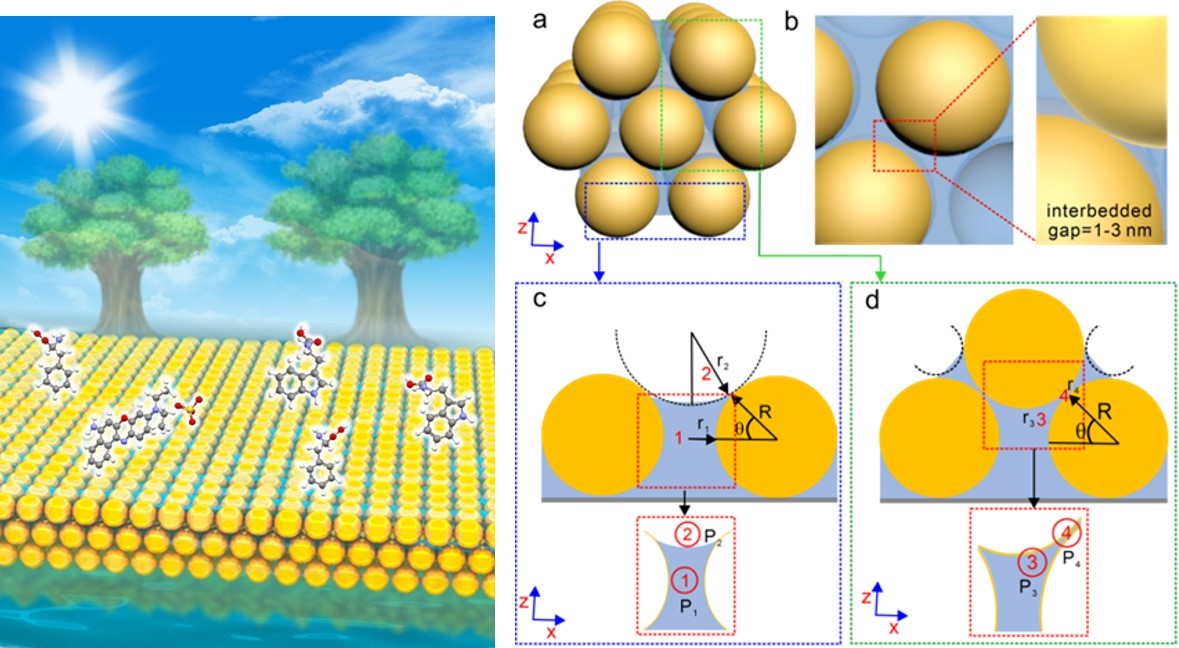
Recently, a team led by Prof. YANG Liangbao from Hefei Institutes of Physical Science, Chinese Academy of Sciences used the nano-capillary pumping action to automatically capture the target molecules into a smaller gap and achieve highly sensitive Surface-Enhanced Raman Spectroscopy (SERS) detection by constructing a multilayer nanoparticle film to form a natural gap of less than 3 nm between the layers.
The results were published in Advanced Optical Materials.
SERS is a molecular spectroscopy with fast, highly sensitive and fingerprint recognition properties.
In this research, the team developed a new SERS method for active capture of target molecules in small gaps between multiple layers that were naturally smaller than 3 nm, which was based on their previous research on the SERS method for automatic capture of target molecules in single-layer nanofilm hotspots.
They constructed a natural three-layer silver nanoparticle film structure with small interbedded gaps of 1-3 nm and a large number of hot spots by a liquid-liquid interface assembly method, which effectively increased the number of hot spots. Due to the nano-pumping effect generated by these smaller gaps, the target solution could spontaneously move upwards through the nano-gaps, and the small gaps actively captured the target molecules making the signals of the target molecules dramatically amplified for sensitive detection.
Compared to the traditional dry state SERS method, this method allowed the target molecule to enter the hot spot more effectively and reduced the detection limit by 2-3 orders of magnitude.
The method provided a platform for trace dynamic detection and had been successfully applied to track material changes during sperm-egg cell binding. The results opened up new methods for the active transport of target molecules to optimal hotspots and were expected to enable ultra-sensitive detection or monitoring of biological systems in the direction of material transformation, cell behaviour or chemical kinetic process studies.
The research was funded by the Research Instrument and Equipment Development Project of the Chinese Academy of Sciences, the National Natural Science Foundation of China, and the Natural Science Research Project of Anhui Province.

Figure. 1 Schematic diagram of three-layer film transpiration on the left and the principle of active capture of target molecules by small interbedded gaps on the right. (Image by QIN Miao)